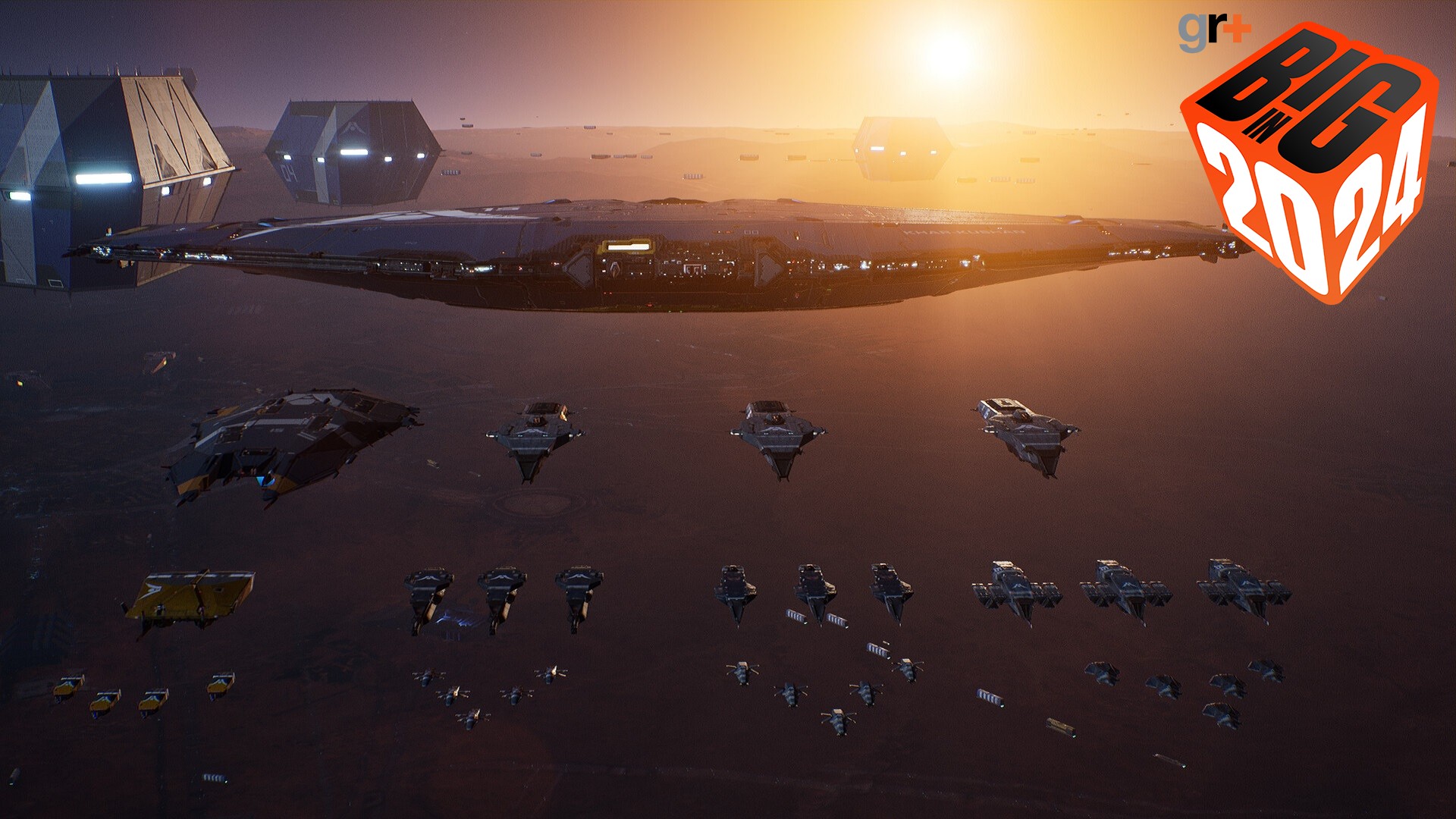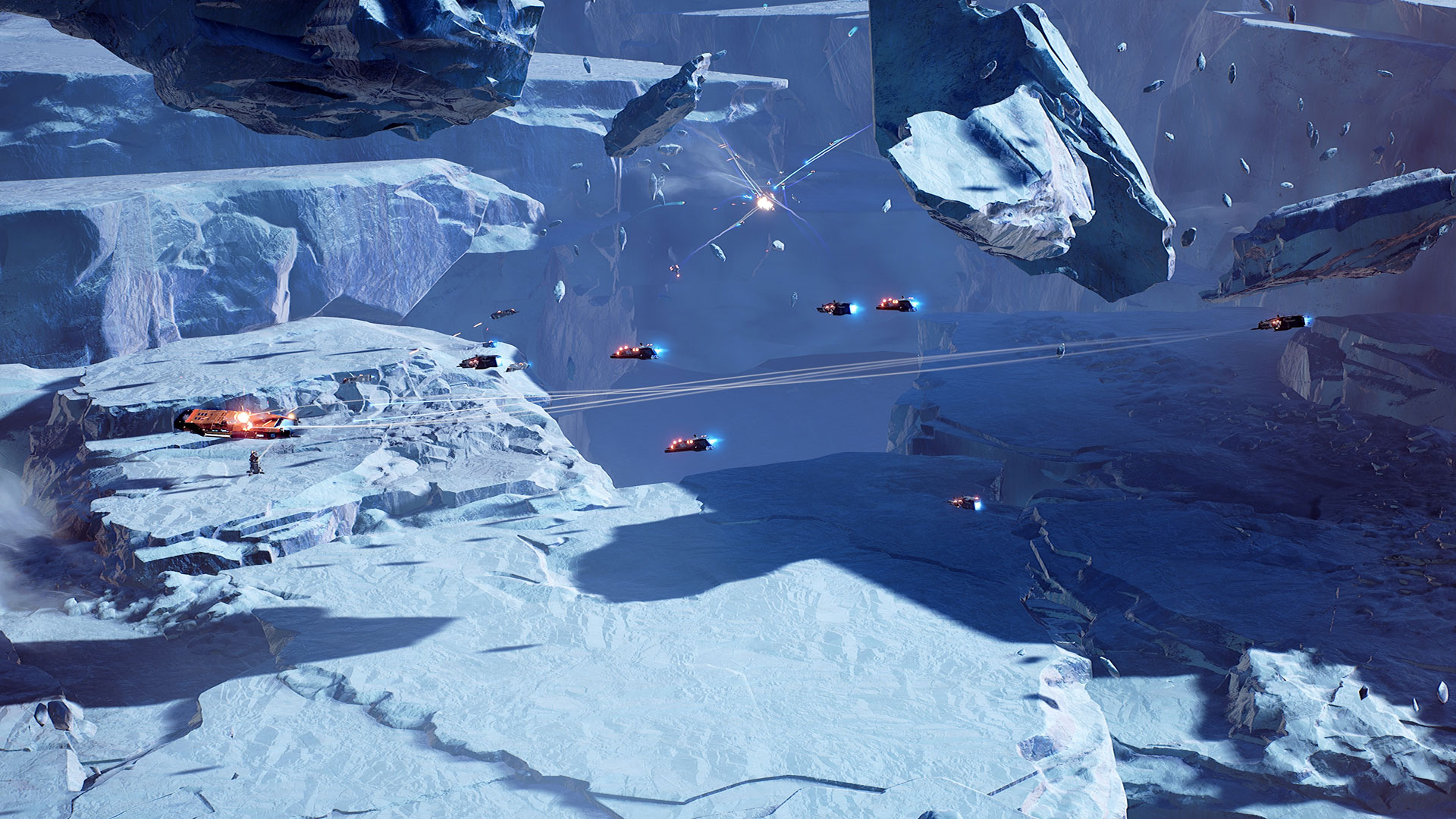
Our resource controller, a slice of Homeworld 3's utilitarian but sleek geometry, floats near a debris field. Smaller resource collectors swarm around it, their orange beams siphoning material that will feed our research and build queues. They are guarded by interceptors, mainstay of this series' dogfights for nearly 25 years. We hit the spacebar, listen for the thrum as the view pulls back into the sensor overlay, and survey the tactical map. Enemy icons have appeared. We scramble our interceptors. Engine trails dance against the glow of a nebula, as the unit chatter grows urgent and Paul Ruskay's score transitions from synths to percussion.
Perhaps more than its genre-defining space combat, full 3D, intuitive UI or persistent fleets, Homeworld is remembered for its atmosphere. There is something conjured up by the hard sci-fi aesthetic, the Middle Eastern influences, the minimalist cutscenes, and the detached professionalism of your advisers, contrasted with the frantic pace of battles, that hasn't quite been replicated anywhere else. While we know little about the campaign, it's a relief to find that atmosphere recaptured so completely here.
War games

The simple ingenuity of Homeworld's structure returns. Hotkeys that streamline rote actions such as harvesting; control groups that make it easier to manage a varied fleet through the rock-paper-scissors game of matching ally ship strengths to enemy ship weaknesses, formations and behaviors; the frugal unit cap; the ebb and flow of zooming out to issue orders and in to follow a ship to victory or demise. But there are also subtle additions
Unit chatter is dynamic, with units reacting differently to a changing situation: pull a resource collector's escort away and you will hear about it if they come under fire. While the XYZ-axes movement wheel is present, certain strategic points are circled and units can be dispatched there with a click on the circle. Camera controls have been refined, making it harder to accidentally issue commands or unintentionally pan out of the play area and easier to move through it. The tactical pause returns, but it's supplemented by four game speed options (disabled in multiplayer).
Other additions are more substantial. The majority of our session is focused on War Games, a PvE Roguelike mode that can be played alone or cooperatively with up to three players. Players work against timed enemy waves to complete a series of randomized objectives, from escorting a VIP to capturing a location. Even with an experienced Gearbox player carrying the day, these test our abilities.
Matches comprise three levels, with the last culminating in what Gearbox is loosely calling a boss fight – in our case, a face-off against a powerful battlecruiser. During a match, artifacts can be collected to buff and debuff, or even unlock, certain units. At the end of a match, a permanent reward is earned, which currently takes the form of artifacts and different starting fleets for the next round.
Missions take place on battlefields that offer a surprising variety of level design, including debris fields, mining facilities and giant megaliths. These structures reshape levels from mere spherical space into tactically varied playgrounds, presenting new options for subterfuge and cover: fly a squadron through a facility to flank an enemy, for instance, or hug a monolith to protect your capital ship from enemy fire.
The additions neither undermine the feel of Homeworld nor make it easier. If anything, they are reasons to throw more at you and give the series new depth. There might not be opportunities for it to be as revolutionary as the original, which was a lightning-in-a- bottle moment, but this sequel is on course to offer the best kind of homecoming.
This feature first appeared in Edge Magazine issue 392. For more great features, in-depth interviews, and more, subscribe to Edge or pick up a single issue.







